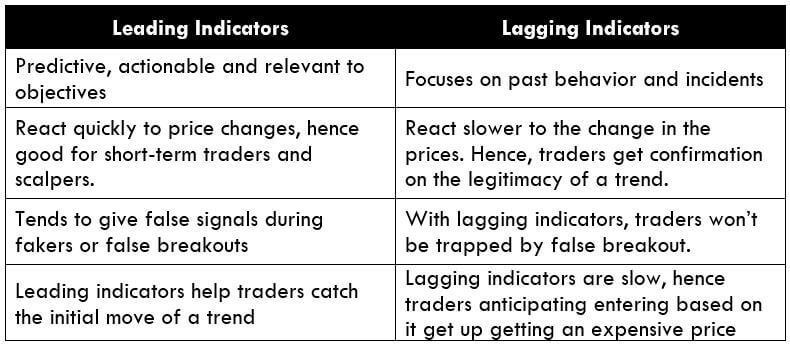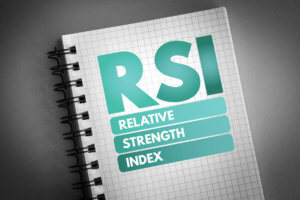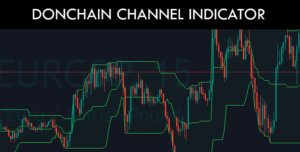Introduction
When getting started with trading, the first things people look out for are indicators. Indicators exist in both technical analysis and fundamental analysis. The difference between the two beings, fundamental indicators indicate or predict a long-term trend while technical indicators predict or confirm a short-term trend.
One of the best forms of analyzing the markets is by using indicators, as it helps interpret the trend in the market and also the opportunities available in them. Indicators are of two types, namely, leading indicators and lagging indicators. The former one is used to predict the future trend while the latter is used to confirm a trend.
What is a Leading Indicator?
It is a type of technical indicator that forecasts future prices in the market using past prices. That is, when the indicator makes its move, the prices follow a similar move. These indicators lead the price; hence they are called leading indicators.
However, never there is a 100 percent surety that the price will move in the direction as predicted by the indicator. Yet, traders can get their ideas from the indicators, see how the market unfolds, and then act accordingly.
What is a lagging indicator?
A Lagging indicator is also a technical indicator that uses past prices and confirms the trend of the market. It does not predict future price movements. Basically, it follows the change in the prices.
Classifying Indicators
There are five types of indicators in technical analysis. Let’s put these indicators in the right bag.
Trend indicators – It is a lagging indicator to analyze if the market is moving up or down.
Mean reversion indicators – A lagging indicator that measures the length of the price swing before it retraces back.
Relative strength indicators – It is an oscillator which is a leading indicator that measures the buying and selling pressure in the market.
Momentum indicators – This leading indicator evaluates the speed with which the price changes over time.
Volume indicators – could act as a leading or a lagging indicator that tallies up trades and quantify the buyers and sellers in the market.
Examples of leading indicators
The widely accepted and used leading indicators include:
- Fibonacci Retracement
- Donchian channel
- Support and Resistance levels
Difference between Leading and Lagging Indicators

Conclusion
All novice traders are in the hunt for the so-called “best indicator” in trading. But there is no such thing as ‘best’ indicator. Every indicator is a useful indicator if applied in the right way. For instance, we cannot use a trend indicator to predict the future of the market and then undermine that it does not work. Instead, one must understand the category under which an indicator falls and then use it accordingly.
I hope you were able to comprehend the types of indicators and the difference between them. In the next lesson, we shall apply some of the indicators into the real market and test them. [wp_quiz id=”70435″]





